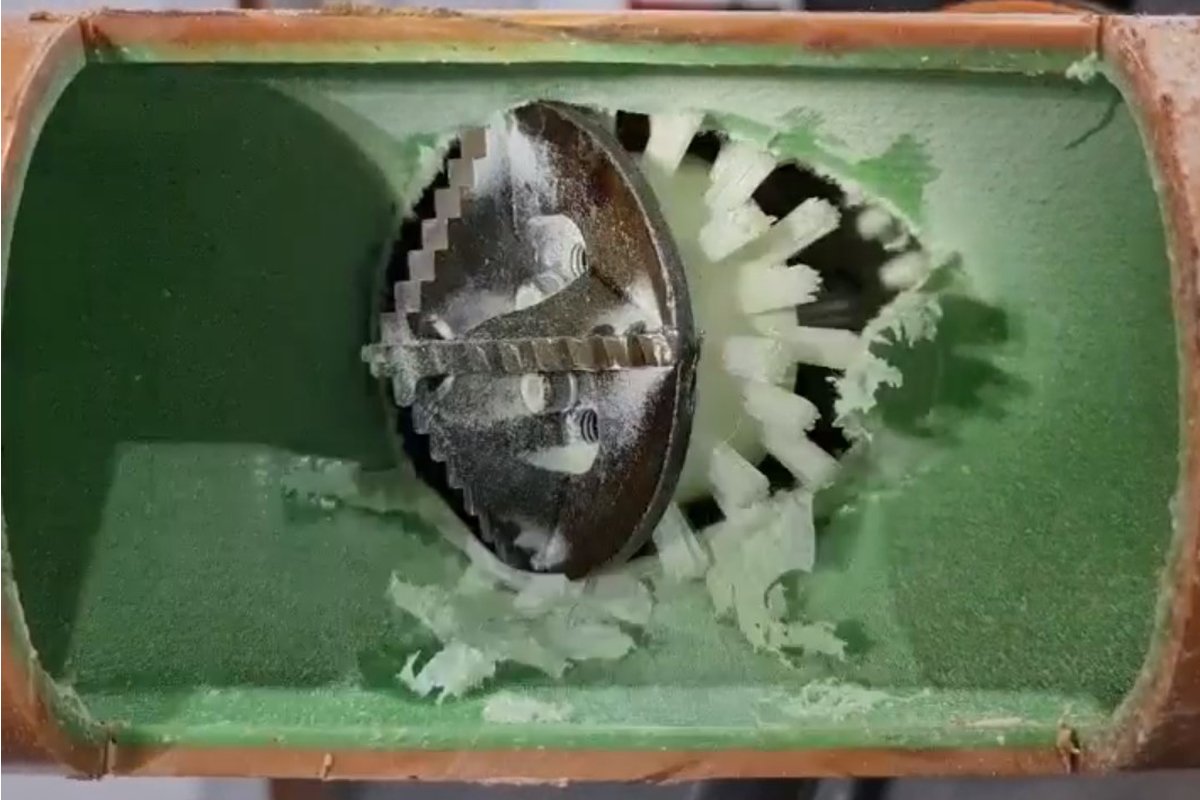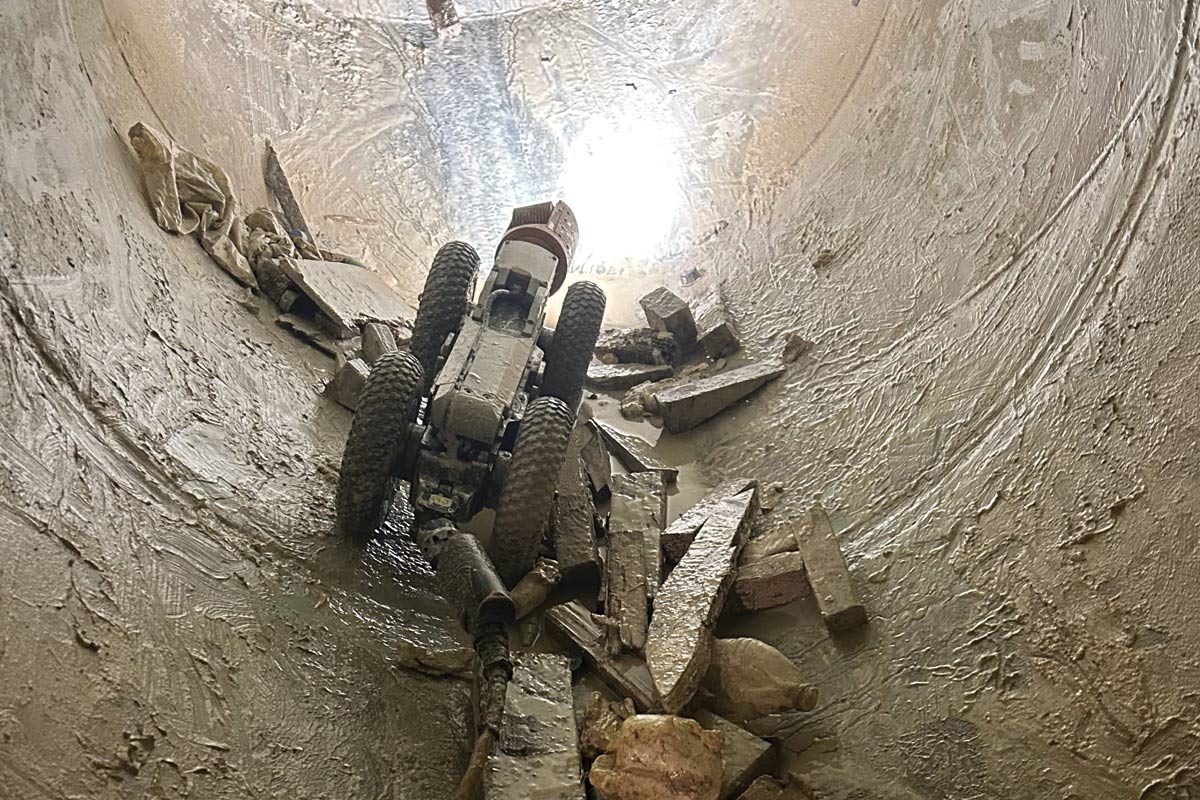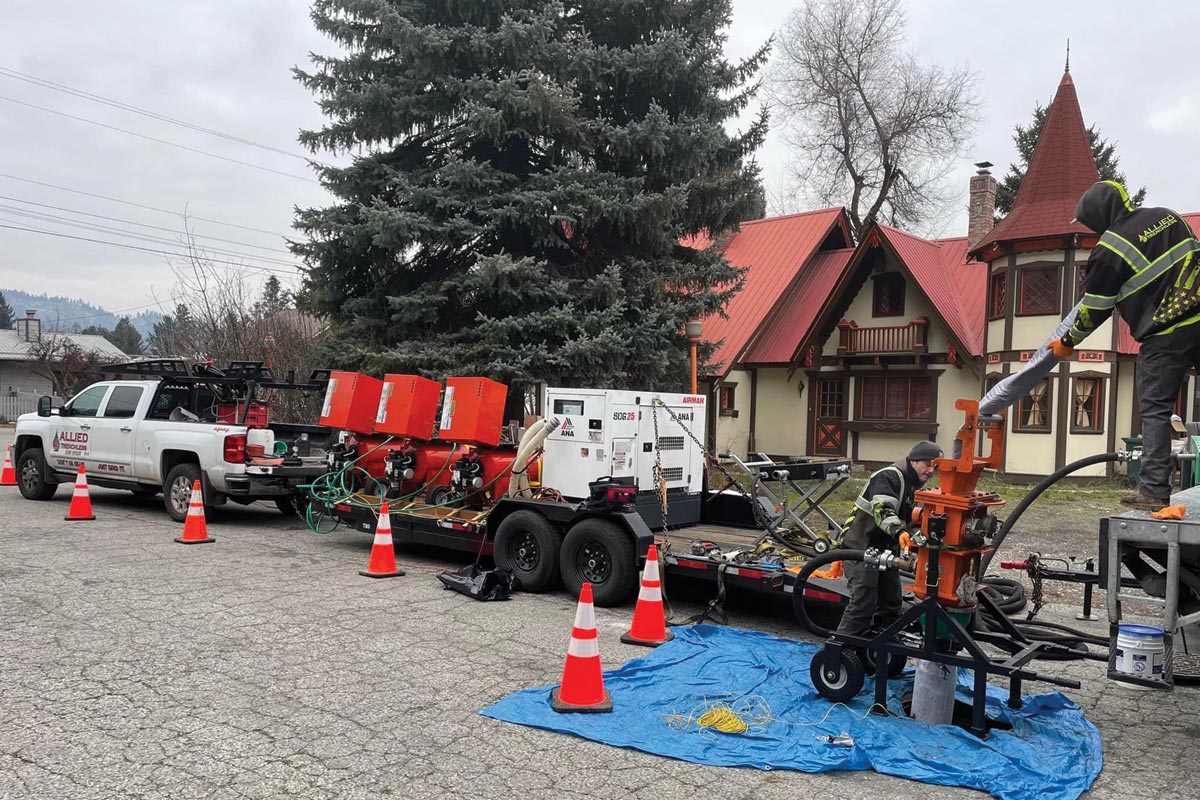
Rehab in Albany, New York: 5 Trenchless Rehab Projects Save Failing Large Diameter Combine Sewer Structures
The City of Albany is the state capital of New York and is the longest continuously chartered city in the United States. The Albany Department of Water & Water Supply is tasked with maintaining the City’s combined sewer system containing many major components that are well more than 100 years old.
In recent years, Albany has been forced to deal, on an emergency basis, with two major sinkholes in the Beaver Creek Combined Sewer District, a network that provides sanitary sewer and storm drainage for more than 5 sq miles of Albany. The Beaver Creek District’s sewer network infrastructure goes back to trunk sewers built as early as the 1850s.
The Albany Water Board is dealing with aging underground infrastructure proactively, beginning with third-party inspection and assessment of approximately 2,600 lf of sewer within the Beaver Creek Sewer District. Built around 1895, the majority of the combined sewers inspected were 84 in. in diameter and were either brick or monolithic concrete. A segment of 48-x-60-in. oblong brick sewer on Warren Street was also inspected. All inspections were performed by manned entry pipe walks in June 2016.
RELATED: Santa Cruz Culvert Rehabilitation from the Outside and Inside
Situation Assessment
The previous emergency repairs had been CIPP relining of 5-ft diameter sewers. Two local factors contributed to the inconvenience this method caused for residents:
- In affected neighborhoods, the combined sewers typically run directly under street centerlines, and rights of way are relatively narrow at 60 ft. Additionally, these are older neighborhoods with minimal setbacks, and houses tend to be built very near property lines. This meant that the expansive staging areas needed for large-diameter CIPP work weren’t readily available, except on actual roadways. Road closures, some lasting days, were quite common during the CIPP work, and the inconvenience to residents was significant.
- Albany is subject to sudden, dramatic storm events in summer, which can cause ‘flash floods’ in sewer systems. This meant that substantial bypass pumping capacity had to be available to keep new liners dry during CIPP cure times. The dewatering process involved two 24-in. lines connected to pumps, which were laid along the right of way during CIPP curing. In addition to the sewer closures, lengthy road closures were necessary, making it physically difficult for residents to get in or out of their homes.

Brick pipe with bend, before rehabilitation.
Solution Evaluation and Design Criteria
Albany Water Department needed a structural, cost-effective, trenchless sewer rehabilitation solution with small staging areas and short cure times to minimize mid-project disruption to area residents and businesses (which included a hospital).
RELATED: Relining Culverts with UV-Curing in Popular N.Y. Tourist Spot
In Albany, the specified CCCP solution had two features in particular that made it the right choice:
- A bi-directional spincaster with an adjustable-radius, sled-mounted, concrete sprayer that is inserted into pipes and withdrawn at precisely regulated speeds, applying (or ‘casting’) thin, smooth and even layers of FACC.
- A specially engineered FACC, formulated with precisely graded quartz sands, non-metallic fibers, and other complex admixtures to achieve a unique blend of strength and other desirable properties needed for successful horizontal pipe rehabilitation. Norman (Ed) Kampbell, P.E. says, “The sophistication of these fine aggregate concretes should not be taken lightly… And it’s not just the strength characteristics, which dramatically exceed those of most concrete products. Low permeability, good freeze/thaw characteristics, the right thixotropy (a measure of viscosity at different pressures) and thin shell toughness—AP/M Permaform (the FACC supplier for the Albany project) has really got all these right with PL-8000, and that makes it a great choice for failing, large-diameter sewers.” (Kampbell 2019).
PL-8000’s short cure times (two to three hours) were highly desirable. Also important was the thin final thickness of the centrifugally cast pipe. Since the combined sewers being repaired are often filled to maximum capacity during storm events, Albany needed to preserve as much sewer volume as possible to prevent flooding. The thin-walled new pipes, which adhere tightly to the original sewer interior, affect pipe volume minimally. Because the new concrete pipe is much smoother than the old brick sewer, which means that the new sewer has a reduced Manning’s n value, actual sewer flow capacity may be increased.

12-in. dewatering line.
Solution Implementation
Ultimately Arold Construction, a contractor licensed and experienced with the selected CCCP solution (CentriPipe), was chosen to provide installation services.
Four total CCCP rehabilitation projects were let under this initial bid process, a total of 1,160 lf. Most of the sewers were 84-in. circular brick, with one short section, just 89 lf, of 48-x60-in. oblong brick sewer. Mid-project, in response to the discovery of a large void discovered in a 60-in. circular brick line in Washington Lake Park, an additional 340 ft of sewer was added to Arold’s contract via change order.
RELATED: NYSDOT Embraces Centrifugally Cast Concrete Pipe for Trenchless Storm Sewer Rehab
The longest pull was 518 ft, well within the system’s capacities, so no special preparation for long pulls was necessary. Likewise, 84 in. is a large diameter sewer, but also well within the system’s capacities, with no special preparation needed.
The longitudinal crown fractures and loose bricks were a matter of concern. Arold crews took special measure to stabilize them before spincasting. The fractures were filled using a hand-sprayer to apply the same FACC material specified for spincasting. Basalt grid was then pinned over the hand-sprayed sections. Basalt was chosen for its flexibility, resistance to corrosion, and its inherent strength against pulling apart.
Another important matter of concern for this project was the need for extreme care and ingenuity when dewatering, to maintain resident access as consistently as possible and to keep workers (and curing PL-8000 layers) as safe as possible. The bypass system needed to handle daily flow and manage sudden huge storm events, as seen in Figure 3. The depth of 25 to 30 ft was an additional complication. Most dewatering was accomplished with bypass pumping using submersible pumps. To ensure dry sewers during the two to three-hour FACC curing windows, Arold devised a collapsible weir that could be deployed in less than a minute. If a storm event occurred during cure times, the weir could be quickly deployed upstream of the new concrete layer and crews could evacuate. Since sewer sections only needed to be kept dewatered for less than three hours, the weir and pump combination was sufficient to keep stormwater out of sections as needed. This dewatering system was thoroughly tested; there were several mid-project storms causing ‘flash floods’ in the Albany sewers, and CCCP layers were never affected and there was never any surface flooding.
CONCLUSION
Access and road closure issues were minimal. Instead of two 24-in. lines on the surface to keep a 5-ft diameter sewer adequately dewatered, only one 12-in. line was needed to dewater these seven-foot sewers. The smaller staging areas meant almost no road closures were needed. One road was restricted to local access for a couple of days, and one area was restricted to a single lane for three days
All work was completed within schedule, including the emergency change order work, despite an unusually stormy summer. The process was cost-effective and is expected to add 50 to 75 years to the lifespan of the rehabilitated sewers, translating into a successful project for the Albany Department of Water & Water Supply.
Keith R. Walker is business development manager for Water Renewal Technologies.




